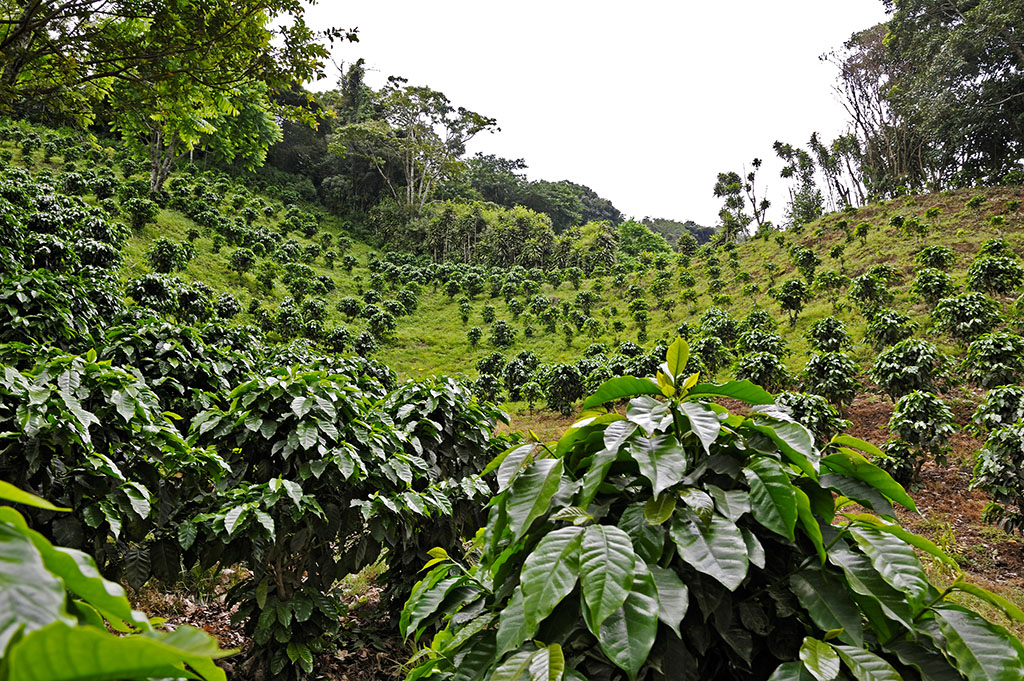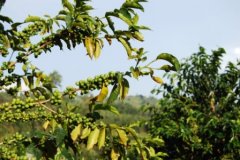The Coffee planting Industry in China is booming and changing the Poverty-stricken villages
Coffee in the west, tea in the east. As Eastern and Western cultures blend with each other, Eastern tea culture has long been integrated into Western life, while Western coffee is gradually accepted by more Orientals.
In China, Beijing, Shanghai, Guangzhou these big cities, cafes decorate the urban style, become fashionable consumption elements
In recent years, China's coffee consumption market has been growing at a rate of 10% to 15% per year. Not only consumption, but also the development of coffee cultivation in China has attracted more and more attention from the world. The best growing environment for coffee is low latitude, high altitude, sufficient rainfall and suitable sunshine, so the ideal growing zone for coffee is between 15 degrees north latitude and the Tropic of Cancer. Brazil is known as the traditional coffee producing area, known as the "coffee kingdom" said. In China, Pu 'er, a millennium tea town in Yunnan Province, is now known as the coffee capital of China. Pu 'er belongs to low latitude and middle altitude area, which is the golden area for coffee planting. It is located in the same latitude area as Colombia, the world famous coffee planting area, and has natural conditions and advantages for developing coffee industry.
From 1988, Nestle took the lead in planting coffee in Yunnan Province. By 2011, the coffee planting area of Yunnan Province exceeded 860,000 mu, and the output exceeded 55,000 tons, with a year-on-year increase of 33.06% and 11.33% respectively. The planting area and output accounted for more than 98% of the country's total, and the export volume accounted for more than 95% of the country's total. Coffee planting has transformed once-poor villages. In Dakaihe Village, Pu 'er City, the whole village is surrounded by lush tea gardens and coffee gardens, and two-story buildings built of marble tiles on both sides of the village road can be seen everywhere.

Important Notice :
前街咖啡 FrontStreet Coffee has moved to new addredd:
FrontStreet Coffee Address: 315,Donghua East Road,GuangZhou
Tel:020 38364473
- Prev

China has become the main force in the coffee market
With the process of China's reform and opening up, Western culture, represented by coffee, continues to infiltrate in domestic cities with the rapid growth of the middle class, with the improvement of the quality of life and the acceleration of tempo. More and more Chinese people accept and like coffee as an elegant, fashionable and romantic way of leisure and art of life. Data from Beijing International Coffee Industry Association and China International Trade Center
- Next

Why is the altitude of coffee plants so important?
Boutique coffee (specialty coffee) is also called specialty coffee selection coffee. It refers to coffee made from a small number of raw beans with excellent taste grown in an ideal geographical environment. Depending on the special soil and climatic conditions in which they grow, they have outstanding flavor. After strict selection and classification, this kind of coffee is hard in texture, rich in taste and stylish.
Related
- Why can American refills for free? The difference between Americano and American drip pot coffee
- Being chased out of the rain in front of Starbucks?! Store: Sheltering from rain under umbrellas poses a safety hazard
- The white moonlight has changed?! Lucky launches "Big Winter Pear American"
- Hand-brewed coffee three-stage method, high-sweet and universal brewing method to share! What does the high sweet water level of hand-brewed coffee mean?
- What is the difference between raw, refined and full espresso coffee? How to extract espresso and taste good?
- A complete list of coffee bean names and their meanings! What is Yejia Shefi coffee? Where is Mantelin coffee?
- What grade does Arida Manor Kaduai coffee beans belong to? What treatment is Arida ASD slow anaerobic sun exposure?
- The milk tea cup becomes smaller?! Overlord Tea Girl launches a new "Return to Yunnan" series
- Accused of selling counterfeit and high-priced coffee beans! Well-known boutique coffee brand "Oukelao" bowed and apologized!
- How to make espresso dumplings? Can I eat coffee and glutinous rice balls together?

